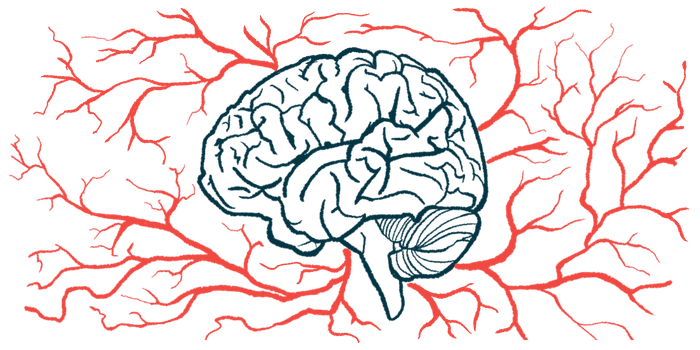IFN-beta Therapy Found to Help Blood Vessels in Brain Dilate in MS
DMT restores cerebrovascular reactivity that's reduced in patients: study
Written by |

Treatment with interferon beta (IFN-beta) — a disease-modifying therapy that lowers inflammation in multiple sclerosis (MS) — was found to restore the ability of blood vessels in the brain to dilate following a stimulus.
A new study suggests that this ability, called cerebrovascular reactivity or CVR, is reduced in people with MS — and can prevent adequate blood supply to the brain.
When patients were treated with IFN-beta, their CVR levels increased to those matching healthy controls, and the number of inflammatory brain lesions visible on an imaging scan decreased, according to researchers.
“Quantifying alteration of CVR with inflammation and its restoration may inform on novel [disease-associated] mechanisms of MS damage and disability,” the scientists wrote, adding that these findings “may lead to the discovery of novel physiological markers of disease status and treatment response,” the scientists wrote.
The study, “Cerebrovascular reactivity in multiple sclerosis is restored with reduced inflammation during immunomodulation,” was published in the journal Scientific Reports.
MS is an autoimmune disease that impacts the central nervous system, comprised of the brain and spinal cord. The myelin sheath — a protective fatty layer that surrounds nerve fibers and allows them to send and receive electrical messages — becomes damaged in MS. That leads to a wide range of symptoms in patients, depending on the affected nerves.
Studies have shown that MS triggers inflammation in two types of brain tissue, known as white and gray matter. In MS, the loss of nerve cells, particularly in gray matter, is associated with disease disability.
Investigating changes in brain blood vessels
Adequate blood supply to the brain is vital to maintain brain function. Therefore, blood vessels have to be able to adapt whenever brain tissues are in need of extra nutrients. This process of dilation following stimulus is defined as cerebrovascular reactivity, or CVR for short.
Whether changes in CVR occur in MS is unknown. However, researchers suspect that alterations in CVR could be associated with neuroinflammation and neurodegeneration — two hallmarks of the disease.
To fill this knowledge gap, a team of scientists in Italy and the U.K. sought to determine if CVR is reduced in people with MS as a result of inflammation. If so, the team wanted to find out whether it could be restored with an immunomodulatory therapy, specifically, IFN-beta.
MS patients younger than 45 who were eligible to start treatment with IFN-beta were enrolled in the study, along with a group of sex- and age-matched healthy volunteers.
To map CVR in gray and white matter, researchers used a breath-hold task during a functional MRI scan. Participants were asked to hold their breath for 16 seconds, followed by a recovery period of 34 seconds, five times, to induce CVR before brain scanning.
Such breath holding reduces oxygen and causes a buildup of carbon dioxide in the blood. This in turn leads to the dilation of blood vessels in the brain and increases cerebral blood flow.
Participants were scanned at three different sessions: one at the start of the study, another six weeks later, and another after about 10 weeks of treatment with IFN-beta. Gadolinium-enhanced lesions on brain MRIs were used as indicators of active inflammation.
In all, 23 patients with clinically stable MS participated in the study. The 18 women and five men had a mean age of 35.6 years. The average score on the expanded disability status scale (EDSS) — an established method for evaluating MS disease progression — was 1.7, which indicated no or mild disability. No changes in the EDSS score were found between each session.
The results showed that, at the start of the study, CVR in the gray and white matter of MS patients was less than that of healthy controls.
Additionally, in MS patients, less gray matter CVR was linked to a lower gray matter volume before treatment. No association was found between white matter volume and CVR in white matter.
During treatment, gray and white matter CVR increased in MS patients. At the same time, a reduction in the number of gadolinium-enhancing lesions was observed after patients started treatment.
“Patients whose MRI scans exhibited a larger reduction in the number of lesions showed a larger increase in CVR,” the researchers wrote.
A total of 12 patients had gadolinium-enhancing lesions at the start of the study compared with three during IFN-beta treatment.
“Our study suggests an association between MS inflammation and cerebrovascular function linking neuroinflammation with mechanisms contributing to neurodegeneration and thus points towards a target for potential therapeutic approaches,” the team wrote, adding that this approach “may reveal which patients are most vulnerable to vascular and metabolic mechanisms of damage.”
It also “may contribute to identifying the best treatment strategy in the individual patient, a major goal in precision medicine,” the researchers concluded.






